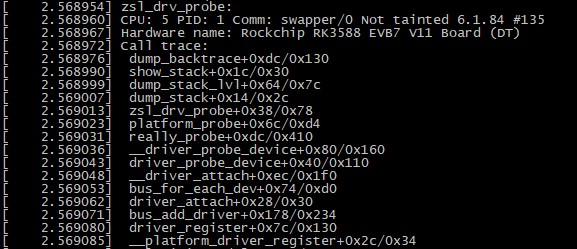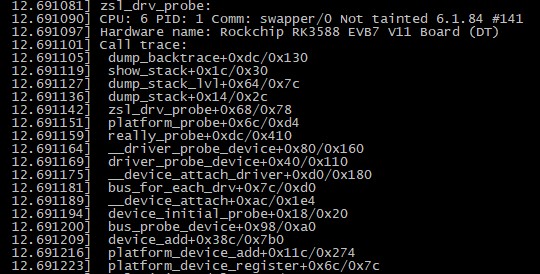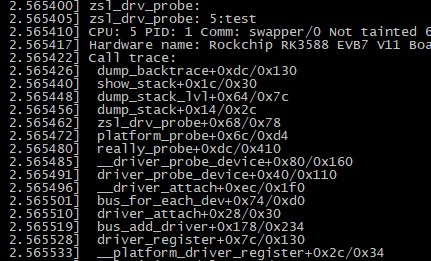在 linux 设备驱动模型中,总线(bus)是连接处理器与设备的桥梁,而 platform 总线是一种虚拟总线,专门用于管理那些不依赖于物理总线(如 i2c、pci、usb 等)的嵌入式设备(如 soc 内部的硬件外设)。
所以platform 总线的主要作用就是统一设备模型,将未挂载到物理总线的设备纳入统一的设备驱动框架。
通过 platform_bus_type 虚拟一条总线,使得这些设备可以像物理总线设备一样被管理。
platform驱动注册
结构体是struct platform_driver,主要包含probe、remove等接口。
struct platform_driver {
int (*probe)(struct platform_device *);
/*
* traditionally the remove callback returned an int which however is
* ignored by the driver core. this led to wrong expectations by driver
* authors who thought returning an error code was a valid error
* handling strategy. to convert to a callback returning void, new
* drivers should implement .remove_new() until the conversion it done
* that eventually makes .remove() return void.
*/
int (*remove)(struct platform_device *);
void (*remove_new)(struct platform_device *);
void (*shutdown)(struct platform_device *);
int (*suspend)(struct platform_device *, pm_message_t state);
int (*resume)(struct platform_device *);
struct device_driver driver;
const struct platform_device_id *id_table;
bool prevent_deferred_probe;
/*
* for most device drivers, no need to care about this flag as long as
* all dmas are handled through the kernel dma api. for some special
* ones, for example vfio drivers, they know how to manage the dma
* themselves and set this flag so that the iommu layer will allow them
* to setup and manage their own i/o address space.
*/
bool driver_managed_dma;
};驱动注册接口是platform_driver_register,主要是把bus配成platform_bus_type后调用driver_register注册。
代码示例:
int zsl_drv_probe(struct platform_device *dev)
{
struct property *pp = null;
printk(kern_info "%s: \n",__func__);
dump_stack(); // 打印堆栈
return 0;
}
int zsl_drv_remove(struct platform_device *dev)
{
printk(kern_info "%s: \n",__func__);
return 0;
}
struct platform_driver zsl_drv =
{
.driver =
{
.name = "zsltest",
},
.probe = zsl_drv_probe,
.remove = zsl_drv_remove,
};再使用platform_driver_register(&zsl_drv)注册这个驱动。
platform设备注册
结构体是struct platform_device,主要包含probe、remove等接口。
struct platform_device {
const char *name;
int id;
bool id_auto;
struct device dev;
u64 platform_dma_mask;
struct device_dma_parameters dma_parms;
u32 num_resources;
struct resource *resource;
const struct platform_device_id *id_entry;
/*
* driver name to force a match. do not set directly, because core
* frees it. use driver_set_override() to set or clear it.
*/
const char *driver_override;
/* mfd cell pointer */
struct mfd_cell *mfd_cell;
/* arch specific additions */
struct pdev_archdata archdata;
};注册接口是platform_device_register,主要是把设备属性填充后,后调用device_add注册。
代码示例:
struct platform_device zsl_dev =
{
.name = "zsltest",
.dev =
{
.release = zsl_dev_release,
},
};再使用platform_device_register(&zsl_dev)注册这个设备,其中zsl_dev里的name和zsl_drv的name保持一样,才能让platform device和platform driver匹配上,从而调用zsl_drv.probe。
跟platform驱动注册配套使用后,运行打印如下,可以看到zsl_drv.probe会被调用到。
运行结果:
- 先注册dev,再注册drv

- 先注册drv,再注册dev

设备树
支持设备的内核里,更推荐使用设备树的方式,而不是platform设备注册的方式。
去掉zsl_dev设备的注册代码,在zsl_drv变量里增加.of_match_table = zsl_of_match,并且zsl_of_match表里增加.compatible = "rockchip,zslzsl",然后在设备树里增加以下代码。
保持两边的compatible一致,并且status是okay的。
这样就会调用zsl_drv.probe,并且可以拿到设备树里的属性内容。
zsl: zsl {
compatible = "rockchip,zslzsl";
status = "okay";
testdata = "test";
};如下修改zsl_drv_probe接口,增加拿testdata属性的代码
int zsl_drv_probe(struct platform_device *dev)
{
struct property *pp = null;
printk(kern_info "%s: \n",__func__);
pp = of_find_property(dev->dev.of_node, "testdata", null);
if (pp)
printk(kern_info "%s: %d:%s \n",__func__,pp->length,(char *)pp->value);
dump_stack(); // 打印堆栈
return 0;
}编译运行后如下,可以看到zsl_drv.probe会被调用到,并且能拿到设备树里的testdata属性。

platform驱动和设备的关系
根据堆栈打印跟踪代码,调用调用关系如下
platform_driver_register
driver_register
bus_add_driver
klist_add_tail
driver_attach
driver_match_device(struct device *dev, void *data)=platform_match(struct device *dev, struct device_driver *drv) //找dev
driver_probe_device
really_probe
dev->bus->probe=platform_probe
drv->probe=zsl_drv_probedriver注册时通过bus_add_driver将driver加入总线(klist_add_tail到总线的driver列表),触发driver_attach,遍历总线的device列表,通过platform_match匹配已有设备。
基本就是按顺序对设备树、id_table name的字符串匹配。匹配成功后,通过really_probe调用总线默认的platform_probe,最终执行driver的probe函数。
platform_device_register
platform_device_add
device_add
bus_probe_device
device_initial_probe=__device_attach
__device_attach_driver
driver_match_device(struct device *dev, void *data)=platform_match(struct device *dev, struct device_driver *drv) //找drv
driver_probe_device
really_probe
dev->bus->probe=platform_probe
drv->probe=zsl_drv_probe
klist_add_taildevice注册时通过device_add将device加入总线(klist_add_tail到总线的device列表)触发bus_probe_device,遍历总线的driver列表,通过platform_match匹配已有驱动,匹配成功则调用driver的probe函数。
这种双向注册机制确保了无论driver和device的注册顺序如何,都能正确触发匹配和初始化。
总结
以上为个人经验,希望能给大家一个参考,也希望大家多多支持代码网。





发表评论